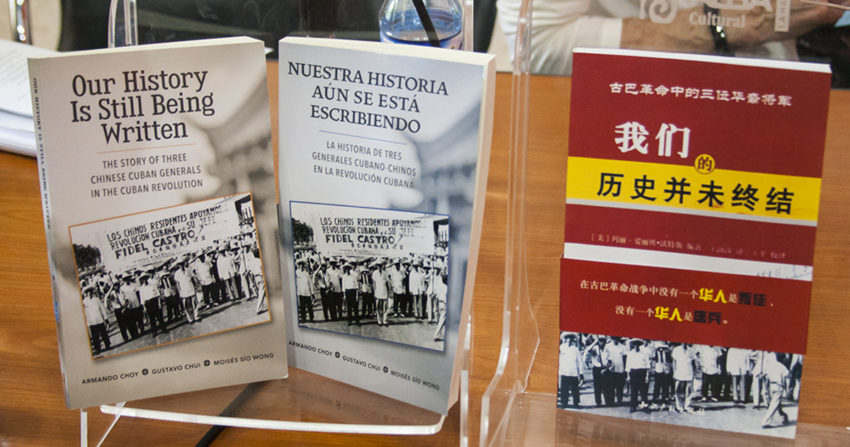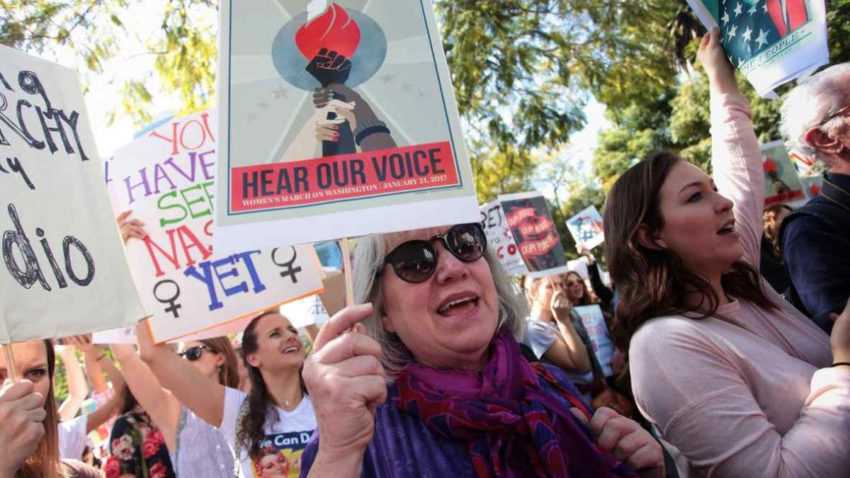Juventud Rebelde 221
Constant Violence in the USA

Constant Violence in the USA
 By Lázaro Fariñas
By Lázaro Fariñas
A CubaNews translation.
Edited by Walter Lippmann.
Posted: Monday 26 February 2018 | 06:09:11 PM
Updated: Tuesday 27 February 2018 | 02:55:25 PM
Three days after the murder of 17 people at a high school in South Florida, a gun show took place in a facility less than an hour’s drive south of the scene. The exhibition featured weapons of all types, from low-caliber weapons to assault rifles such as the famous AR15.
Hundreds of such events are held annually in the United States and are attended by thousands upon thousands of citizens who, for a small fee alone, have access to the exhibition.
The exhibitions are not only to show the different types of weapons that are on the market for sale, but also, so that those who want to buy are able to do so right there and leave with their preferred weapon.
With incredible insensitivity, the organizers of the exhibition held in Miami told the press that they could not suspend the event because they had spent a lot of money on organizing it. While the relatives of the victims of the massacre buried their loved ones, a few miles to the south, merchants of the death boasted of how well they were doing with the sales of such deadly equipment.
Any sensible person would have to wonder what madness that is? How come it’s so easy to acquire a firearm? How can one justify the fact that it is legal for an adolescent to be able, calmly, to locate a gun dealer and acquire an assault rifle that in reality only serves as an offensive weapon?
I don’t really think anyone rational has a rational answer to this question.
What kind of society has this great country created that cannot prevent firearms from being legally purchased without any restrictions as easily as you can buy onions in a grocery store?
The right to possess the weapon of choice is enshrined in this country’s Constitution and dates from the 18th century. Today, in the 21st century, the same law as it was more than 200 years ago continues to apply. And the worst thing is that the constitutional amendment that protects this citizen’s right has been almost impossible to repeal or alter, given that there is a lot of money involved in trying to prevent that from happening.
The theory of those who blindly advocate that the famous [Second] Amendment remains in effect. It says we all have the right to have a firearm for our personal or family defense. But the argument is not even as to whether that is desirable or not, but as to the type of weapon and caliber that the law allows being purchased.
Can you justify a parent having a weapon of war in his or her home? What are you doing with an assault rifle that’s only produced for combat?
No one who has the ability to respond or create laws to make it illegal to possess assault weapons or any other weapons in the hands of private individuals dares to act.
Representatives, senators, governors, mayors and even U. S. presidents who have dared to mess with the firearms industry are few and far between. The economic power of that conglomerate is so great that most politicians do not dare go head-to-head with it and create laws that prevent anyone, including crazy, insane, mentally ill, teenagers, murderers or a normal, rational person, from reaching a gun dealer and buying the gun they want.
In reality, it is very difficult to imagine what the solution to the problem facing American society could be.
We should also ask ourselves whether, by preventing arms from being bought for without limits, the problems facing this country would be solved? I don’t think that with only laws that prevent their acquisition or possession, these massacres that occur so often will end.
There are other factors involved that lead to the creation of a society as violent as the North American one. These include its own history of wars, invasions and massacres by governments, the proliferation of organized mafias, the assassinations of presidents in office, the annihilation of indigenous peoples, police abuse, high drug use, TV serials with a high level of violence, action movies, violent video games, the loneliness in which children are raised, etc., etc.
The violent acts are in the DNA of this country, therefore, I fear that unfortunately, every now and then, we will continue to see and regret events such as those that occurred in the Florida high school where 14 teenagers and three adults were murdered.
Three Chinese Generals in the Cuban Revolution

Stories of Three Cuban-Chinese Generals in the Cuban Revolution
American publisher Pathfinder presents a second edition of the book of interviews with generals Armando Choy, Gustavo Chui and Moisés Sío Wong
Published: Tuesday 06 February 2018 | 11:55:33 PM
 By Leyanis Infante Curbelo
By Leyanis Infante Curbelo
leyanis@juventudrebelde.cu
Translated and edited by
Walter Lippmann for CubaNews.
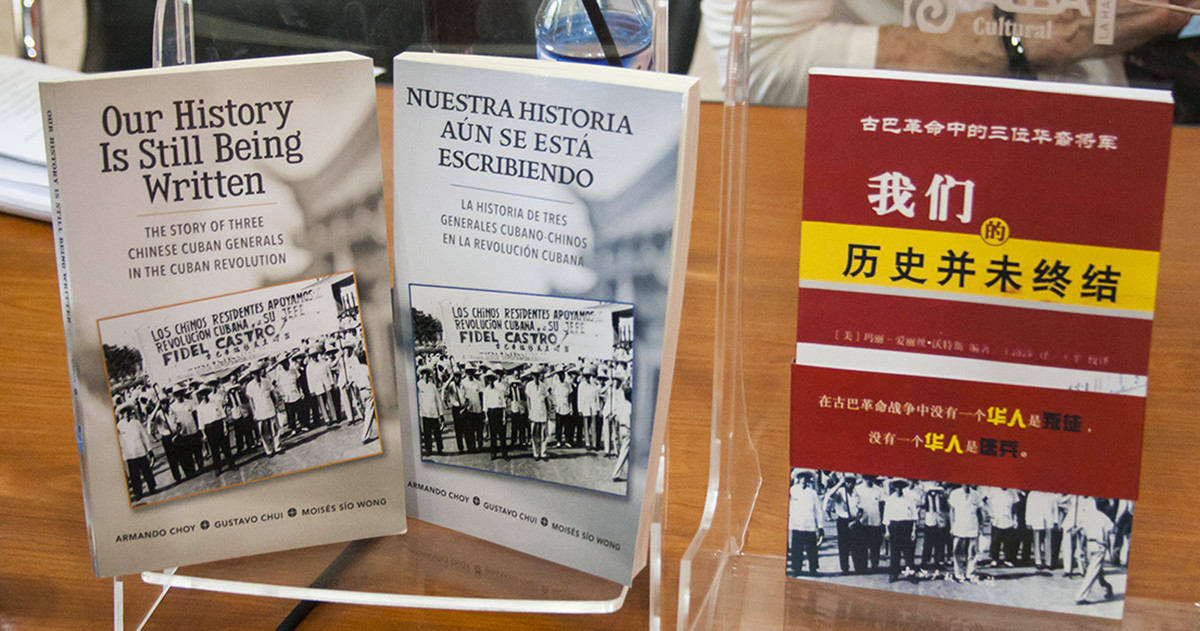
Our history is still being written. The story of three Chinese-Cuban generals in the Cuban Revolution is the proposal with which the American publisher Pathfinder brought to the 27th edition of the International Book Fair of Havana, in a second edition of the text, in this case with versions in Spanish, English and Chinese.
Originally published in 2006, the volume was enriched with new photographs and updated context information, according to Martin Koppel, editor of the Spanish-language version, during Tuesday’s presentation at the Casa del Alba Cultural.
The protagonists of these pages are Cuban generals Armando Choy, Gustavo Chui and Moisés Sío Wong (already deceased), all of Chinese descent, who, through a series of interviews, conducted by members of the publishing house for several years, share their experiences in the revolutionary struggle and important moments of the Cuban Revolution, such as the war in Angola or the harsh years of the Special Period.
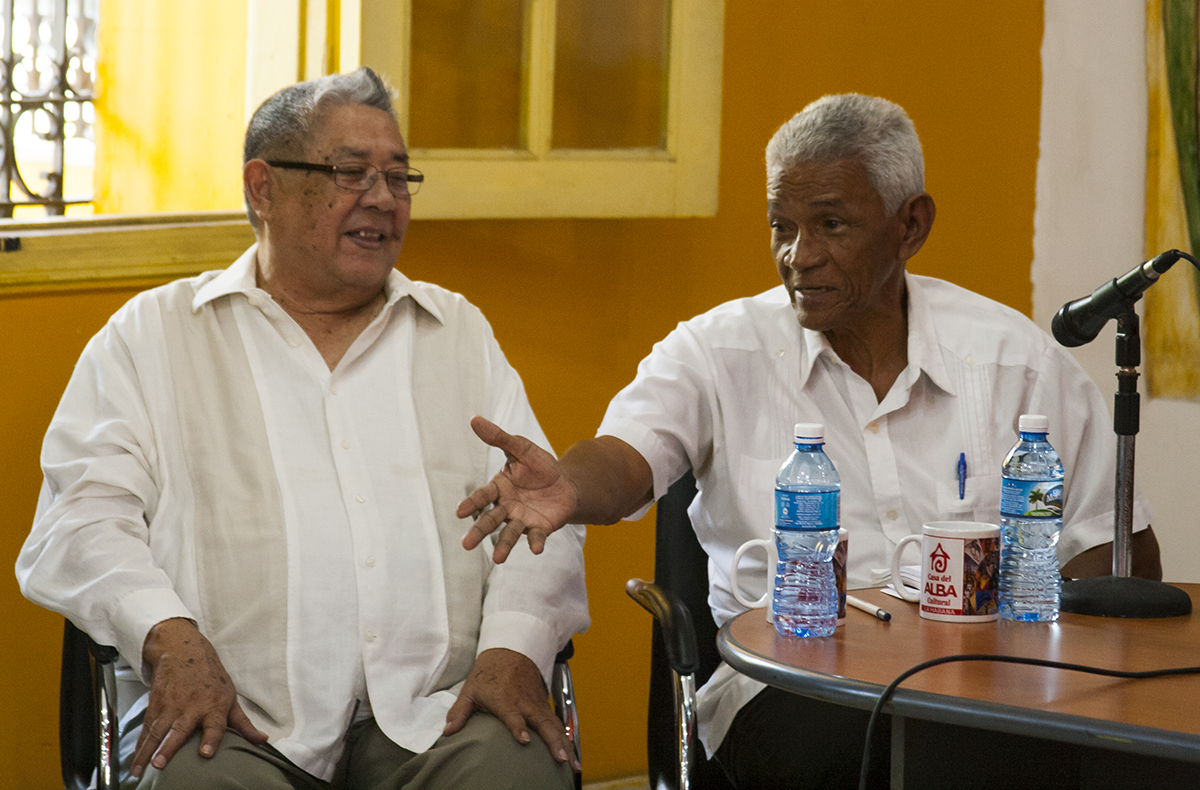
Cuban generals Armando Choy and Gustavo Chui. Photo: Maykel Espinosa Rodríguez
Something is very clear from the very first lines of this book of testimony: one cannot talk about the history of Cuba without mentioning Chinese participation in it.
The book is divided into three main thematic and historical sections. The first tells about the future of three young people and their incorporation into the struggles against the tyranny of Fulgencio Batista and the Revolution led by Fidel Castro. In addition, it offers a panorama, always from a personal dimension, of the formation of the Chinese community in Cuba.
A second chapter covers the years of Angola’s epic era between 1975 and 1991, and the implementation in Cuba of the concept of war of the whole people in the 1980s, following the aggressive escalation of the US government led by Ronald Reagan.
Up to the most current moments of the Revolution, the third and last section approaches, beginning with the start of the so-called Special Period. In this book, the reader will find anecdotes and reflections on the deep economic crisis that the Cuban nation went through in the 1990s, after the fall of the Socialist Camp, the search for alternatives and the relationship with the Bolivarian Revolution since 1998.
A fundamental principle is at the heart of the book’s pages, because from the fiber and the actions of its protagonists, we discover some Cuban-Chinese who believe that a better world is possible, but only with a socialist revolution.
One of the greatest merits of the text, according to Koppel, is the possibility of bringing together millions of men and women who changed their social reality and became different human beings.

Mary-Alice Waters and Martin Koppel, editors of the English and Spanish versions respectively. Photo: Maykel Espinosa Rodríguez
What began as an interview for the Socialist Workers’ Party newspaper in the United States in which the editors are active, became a major project, which lasted for several years and more than 12 interviews and ended up as one of Pathfinder’s best-selling and most popular books.
Mary-Alice Waters, editor-in-chief of the English-language edition and chief interviewer, spoke of the tremendous impact the book has had outside Cuba, mainly in the United States, Canada, Britain and Australia. No book published by Pathfinder in recent decades has been so widely disseminated internationally,”he said.
The work already has a significant track record, with presentations in more than 25 countries. More than 15,000 copies have been sold and it has translations into English, Chinese, and soon French, which guarantees its acceptance. In the case of the United States, it has presented itself in more than 20 cities and as many universities.
Along with all of the above, the editors consider that there are other reasons that make the book relevant: Through its pages readers will discover that Cuba was the first destination of large-scale Chinese emigration in the nineteenth century, will be surprised by the great participation of Chinese in the wars of independence against Spain between 1868 and 1898 and, Above all, it is clear that, unlike many countries in the world, discrimination and prejudice against Cubans of Chinese descent no longer exist, thanks to the social revolution that triumphed in Cuba in 1959.
Additionally, they point out that the Cuban Revolution, its beginnings, and most recent history continue to capture the interest of many people around the world, especially from a working class that seeks answers and alternatives to the crisis situation they have recently experienced and are still experiencing.
For General Gustavo Chui, this book is a tribute to Chinese emigration to Cuba in the 19th century, which fought tenaciously to settle in our country, assume its customs and participated in its wars of independence and social struggles in the compromised Republic. That’s why we say that our history is still being written, because from the contribution of our ancestors until today, we continue to be intertwined in every stage of Cuban history.
Chui added that although at first, they thought it was a book for Cubans, then they understood the importance that it could have outside the country, as it was a way to tell the story of the Cuban Revolution and transmit its message.
Cuban readers approached this publication through the Political Editor of the Party’s Central Committee in 2006, so this new presentation of Our History… offers the opportunity to acquire this title, currently sold out in Cuba, at Pathfinder’s booth in the San Carlos de La Cabaña fortress.
The presentation of this second edition was also attended by Caridad Diego, member of the Party’s Central Committee and president of the Friendship Society Cuba-China; General Harry Villegas (Pombo) and members of the Cuban Revolution Fighters Association and the community of the Asian country in the country.
Pathfinder publishing house brings together more than two decades of work with Cuban authors and has published more than a dozen books on our Revolution – which Martin Koppel considers an example for workers and young people in the United States – and its protagonists.

Other titles brought to the Fair this year by the publishing house. Photo: Maykel Espinosa Rodríguez
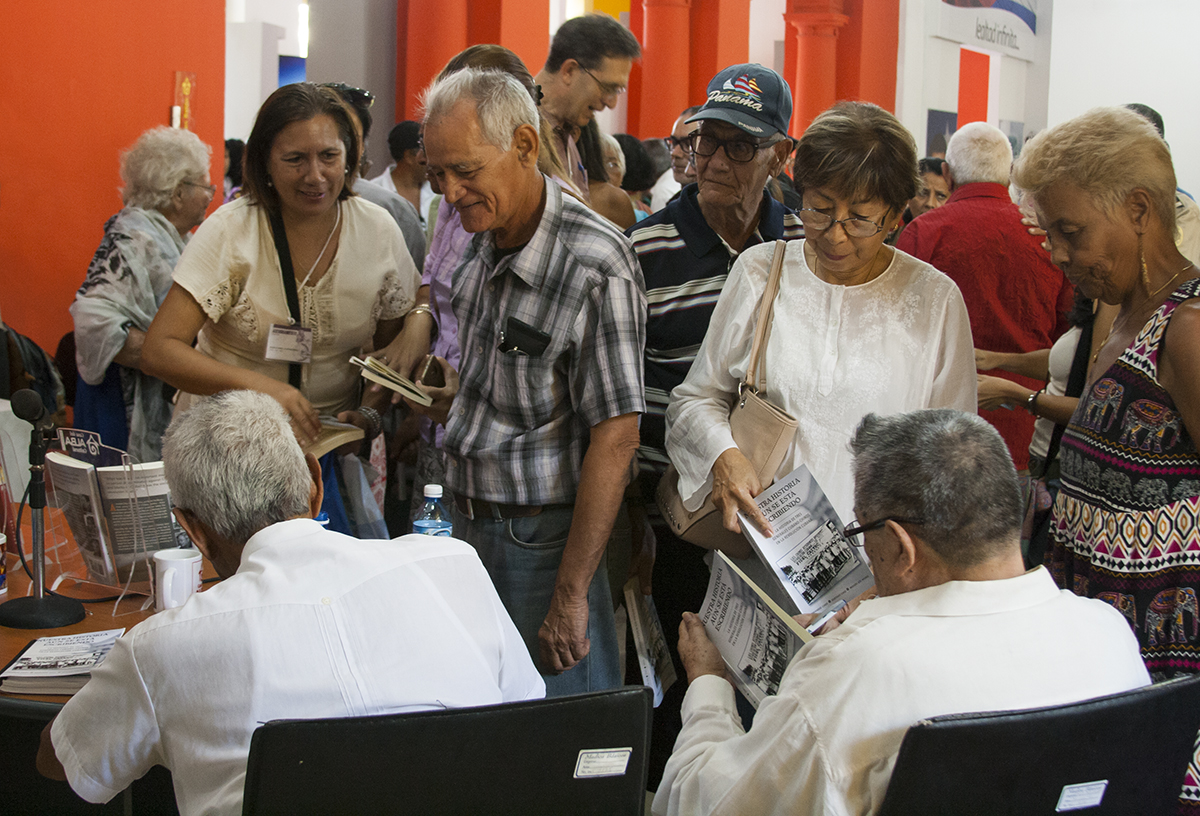
An avalanche of readers waited for the signing of these heroes in their books. Photo: Maykel Espinosa Rodríguez
Journalism and popular control

Journalism and popular control
 By Author: Ricardo Ronquillo Bello
By Author: Ricardo Ronquillo Bello
ronquillo@juventudrebelde.cu
A CubaNews translation. Edited by Walter Lippmann.
Which is most important in a modern, interconnected society: the prevalence of a broad system of public ownership of the media or the confidence of its recipients? Does the type of media ownership itself guarantee the much-contested credibility? These, like others, are among the questions we must ask ourselves in Cuba, which has begun the path towards updating its model of socialism.Or perhaps the question should be rephrased: does the monopoly of public ownership of the media guarantee it a monopoly of credibility, influence and authority?
The degree of public exposure and information currently available requires that discourse, in order to be effective, legitimize itself before public opinion.
Julio García Luis, Doctor in Communication Sciences, maintained that, of course, there are monopolies on media discourse, big monopolies, part of a grotesque tyranny, with different scales, local, regional, world-wide; but these subsist for their apparent porosity, for their ability to blend, for their feigned independence from the real power. On the contrary, what is difficult today would be a monopoly of airtight claims such as those already known.
He added that ideology, whether or not carried out through discourse, is what allows the world to be perceived –with deforming prisms or sharpness-. It is what makes it possible to organize the power and exercise of hegemony, and it is what gives the capacity to control the components of society.
In the Cuban case, he said, this control cannot be based on deception, on the manipulation of symbols, but on adequate information, interpretation, persuasion and conviction of the great majority of the public.
Social networks, citizen journalism, among other phenomena, are radically changing the traditional ways in which so-called public opinion and consensus is formed.
So, other questions we must ask ourselves are: How do we build consensus in the information society in which we inexorably enter? What role does journalism play in the construction of an authentic and credible hegemony of revolutionary ideology? How can communication systems appropriate the new tools to move towards more democratic and participatory forms? How can we guarantee greater authority and influence in front of increasingly dispersed audiences?
The truth is that [today] Cuba’s public communication system is challenged to reformulate its authority before the public, based on the only thing that guarantees it: credibility. It is something that is possible not only with a change in the media model, but in the entire communicational model of society, and with a truly revolutionary conception that would define the press as one of the forms of popular control.
Research in recent years shows that this structural weakness has different dimensions, and therefore what is at issue in the new conjuncture is to consider a structural change, as was outlined on the last congress of the Union of Journalists (UPEC) and on successive professional and political meetings.
In order to overcome these tendencies, in addition to trained professionals, we have the strength of a journalistic and revolutionary tradition based on the deepest vocation of service inherited from the nation’s founders. Among them was Father Félix Varela, who, in approaching the function and scope of journalism, pointed out: “I renounce the pleasure of being applauded for the satisfaction of being useful to the fatherland”. His brilliant and faithful follower, José Martí, though the press should be the keeper of the country house: “He must disobey the appetites of personal good, and pay impartial attention to the public good”.
That legacy should also be useful for those accustomed to apology, silences and the twists and turns that never failed to arise in the complex path of building socialism.
There are basic reasons to consider the unfeasibility of our continuing with the model of institutional dependency and reaffirmation journalism that prevailed as a rule until today, and to grow towards another one of confrontation of the best revolutionary ideas.
Verticalist and reaffirmation journalism*, –although it allowed the great consensus that the country needed to forge against the aggressiveness of the US, and to structure a model of society under very specific historical conditions– distorted media’s function as a check and balance, which occurred alongside that of other structures of democratic confrontation in the country.
This happens at a time when the Revolution is updating its economic model, as the first step towards gradual transformations, on which, as we are already doing -not without difficulties and misunderstandings. We have a historical responsibility to help create the necessary political consensus and professional vigilance, in order to avoid distortion of its scope.
We cannot ignore the fact that the Revolution is about to go into its toughest test of fire: the relay of the historical generation, while the Cuban media gradually, albeit inexorably, loses its monopoly of influence, as a result of the rise of new technologies.
In this readjustment, the Cuban public press must have an expedited path to support civic debate and revolutionary counter-attack.
*TRANSLATOR’S NOTE:
Verticalism means, roughly, decisions made from above.
Reaffirmation, means, roughly, supports the Revolution.
Travel Photography

Travel Photography, More than Postcards
Our first challenge of 2018 addresses a theme that has gained so much prominence that it has become a genre within photography.
By Leyanis Infante Curbelo leyanis@juventudrebelde.cu
and Maykel Espinosa Rodríguez digital@juventudrebelde.cu
Published: Wednesday 14 February 2018 | 06:21:23 PM
Updated: Thursday 15 February 2018 | 12:12:12:40 PM
Translated and edited for CubaNews by Walter Lippmann.

Eastern Cuba. Author: Roberto Suárez Published: 09/10/2017 | 10:10 a
Hello photographer:
With the proposal that we bring you to inaugurate 2018, it is almost impossible that you won’t feel identified. In fact, most of our readers, whether or not they love photography, will feel they have something to say or show for it.
We are referring to travel photography, which with the rise of cyber platforms, and the amplification and cheapening of access to equipment capable of taking photos, is one of the themes that has been most developed and popularized worldwide: travel photography.
It is no longer just professional photographers who display their impeccable graphic memories of the places they have visited. Increasingly, from social networks and blogs people share their experiences in other latitudes, offer advice, suggest itineraries… and show their images. Some even live make a living from it.
So much so that travel photography has begun to be recognized as a [distinct] genre and enough literature has already been written about it.
Usually, we all take images of the places we visit, with the intention of remembering them later and to enlarge our personal graphic memory. But what kind of images do we make, of what objects or subjects we photograph and above all, why.
It’s not just a postcard.
For some authors, travel photography is just one facet of photojournalism, another way to tell stories. And the fact is that, although it is not wrong to want to immortalize in our images in a kind of postcard of what we have seen, there are many other ways to face a tourist visit.
It is clear that there are essential photos. For example, if you visit the Valley of Viñales, you will not fail to take a panoramic photo from the Hotel Los Jazmines, nor from the paradisiacal beaches of Varadero. But you will make a difference when you also begin to tell stories, when you imbue your images with the feeling of the place you visit, portraying its inhabitants in their surroundings, detail traditions, gastronomic culture… and everything that grabs your attention (animals, streets, doors, trees).



Take pictures from the first moment. Preparations for the trip are also part of it.
Take photos on the means of transport, including the plane. To do this, you will have to be attentive and request the seat in a window in which the wings of the plane do not obstruct your vision. Take advantage of this opportunity to take aerial photos.
In addition to the typical places, it also seeks to bring out daily customs and characters.
Photograph the people of the place… but first, ask them for permission, not only to take the photo but also if you plan to publish it or upload it to your social networks.
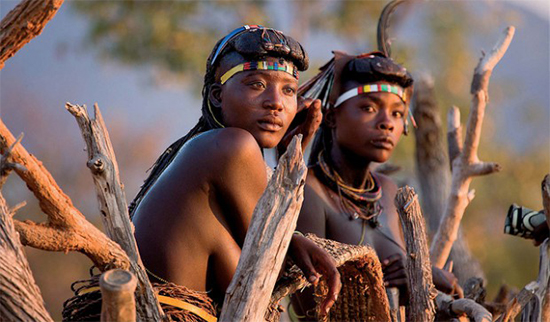
Include tourists and passers-by in your images, that will make them more attractive and moving.
If you photograph your fellow travelers in a space or in front of an important building or monument, take a short shot of your friends, half-body or closer. Otherwise, they’ll be so tiny that you won’t notice them in the picture.

Above all, try to do things with common sense, discretion, and education. When in doubt, always ask.
When you return from your trip, make a rigorous selection. Make the selection as if it were a projection, at 4 seconds per photo, you should be able to see the selected photos in 3 or 4 minutes maximum so you don’t bore your audience.
With information from https://www.blogdelfotografo.com and https://saltaconmigo.com
Superheroes, Super Powers, and Supermistakes

Superheroes, Super powers, and Supermistakes
Superheroes represent the dark force of a society, that which can be invoked at any time and is not only above all human beings, but also imparts justice beyond failed legal structures.
By Mauricio Escuela digital@juventudrebelde.cu
Translated and edited by Walter Lippmann for CubaNews.

In the scenario of extreme inequality, the hero appears in Batman and Superman costume. Author: Juventud Rebelde Published: 02/10/2018 | 10:25 pm
An anonymous young weakling who works in a low-level position suddenly sees himself in the middle of an extreme situation, says the word Shazam!, and becomes the almighty Captain Marvel. The magical word brings together the initials of numerous mythological heroes and gods of the Western past: S for the wisdom of Solomon, H because of the strength of Hercules, A representing the Greek Atlas and its universal power, Z of Zeus, M of Mercury (Hermes), who symbolizes agility. Many children of several generations locked themselves in their rooms to say that Shazam!, without anything extraordinary happening since it is just another myth.
The superheroes represent that very thing, the hidden force of a society, that being that can be invoked at any moment, and that is not only above all human, but also imparts justice beyond the failed legal structures. Throughout the Batman saga, the almost null Inspector Gordon is limited to illuminating the sky with a reflector so that the man-bat appears to correct what gets away from politics, society, the rule of law. In this way a strong covert message is sent in adventures and empathy: there is no law, only the market, and the only thing that can save you is a mythological figure that comes out of nowhere, anonymously. That capitalist miracle in the midst of chaos responds to the climate of the decade in which comics emerge: that of the 1930s, that of the Great Depression in the United States. The hero appears in this scenario of extreme inequality, comes from the planet Krypton, fell from the sky and is made of steel.
If, in the Germany of the interwar crisis, a pessimistic expressionism flourished, full of unrecognizable figures and appealing to the Germanic mythological past (vampires, monsters, night shadows, sorcerers), in the United States the mythological universe had to be created from the ideario of a power librecambista and of recent creation, whose best writers perhaps were about to be born. In the era of demystification and the crisis of credulity, the new pulpit was appealed to: the media and the strength of the image. They also prefixed the most vulnerable targets, children and adolescents, men who, tomorrow, could make the dangerous revolution if they are not taught that Superman will sooner or later impart the justice that they do not see anywhere.
If the myth appeals to the collective subconscious, to that which is beyond the visible, it can be put on any suit and will preferably be uniformed according to the dominant ideological values. In the Batman saga, for example, on more than one occasion, the superhero talks with young Robin to explain why crime exists: “they hate the order in our city.” Therefore, the causes of the rupture of justice should not be sought in scientific estates, or studying the political economy of the moment, but should assume the same metaphysics: if the hero comes out of nothing, the villain too, and none of both need to be explained. Both myths are the owners of the duality that makes up the ethical concept (good and evil). They are beyond the measurable, not imprisoned or legitimized or the police, much less the vote of the elector. Both Gotham City and Metropolis are safe cities because they are Batman and Superman, not because the state elected by the people normatively exercises its functions. It happens that neither of the two are real.
Being above good and evil, superheroes can make mistakes, but that never happens, and that unlikely factor is the ideological support of the comic: laws can be a kitchen towel, the world will fall apart, this market devours and only produces unproductive tyrants, but the ideal is still perfect. The nullity of the state and the apology of the famous “invisible hand” of the liberal Adam Smith, both function as pillars of capitalist consciousness before and after Captain America, only that its update through super-powered media models comes to place us in front of an opium of the villages almost charming.
The dark of Tim Burton’s Batman Returns , sure bothered the ideologues of the comic because, how is it that our hero is allowed to hit by Catwoman or, even, takes off the mask, so that your girl loves her true self and not the myth? It was a very intellectual and human dark, something far from nationalist steel. Result: Tim Burton was fired and the saga continued with a Batman who even uses torture to obtain information (this in the Bush Jr. era and the use of illegal prisons and preventive invasion). Trashing the rule of law and the prevalence of free trade as a shield despite the evils that entails, that is what those who gave gourds to the genius of Tim Burton want.
Spiderman better supplied his mythological role, with that pure consecration to the cause of justice, that not even an American blonde and her charms can divert. So, the superhero barely gave his girl a little kiss, while holding her head and masked. The sneaking of something other than the fight against evil demonstrates the apolitical and virile of the ideal of justice embodied in that kind of omnipresent myth. The sexuality of superheroes is almost invisible, despite the fact that male marks are evident in tight suits and perfect bodies. The companies place brides next to these characters, but rarely do we see that these relationships are consumated, since it seems that the myth is there untouchable before the human and imperfect macula of sex. The superhero is made of the best, and this practically implies a celibacy before ordinary things. Let us not forget that it is aimed at young people and that libido is, according to Freud, the sine qua non mechanism of liberation of the true self trapped in Western conventions.
The mask of the superhero supplies the feeble face of the real man, because the idealistic condition seems given by a supra and unknown being, beyond the same protagonist, who does not choose to be as he is. Thus, the human doubles of Superman, Batman, Captain Marvel, etc., are perhaps even more unhappy than the rest of humanity. They show an obvious disability, as is the case of the surly character of the boy who becomes Spiderman, who I would suffer from agoraphobia. It is the invisible hand that draws them and places them in the middle of situations that they resolve and after which they must disappear behind anodyne human existence, to a normal life marked by the crisis of a system that, in the discourse of comics, is not perfect but has its own regulatory mechanisms of justice beyond legal justice.
The comic superhero emerges as the modern mythical expression of capital, coming to give security to the insecure in the middle of the voracious market. In the subtext is the call not to go to strengthen the eligible structures, such as the state or the laws. Instead it wants you to rely on an invisible and a much more powerful metaphysics that nobody knows, but that arises as soon as “Shazam!” is said. There is also there, among the ink of colors, the message that justice has a private owner, a millionaire conscious of his social role (Batman), capable of establishing it with the required perfection. Now, the role of those who look at the comics should not be to separate them, but to know well that we are not like Inspector Gordon, who leaves everything in the hands of a sign in heaven. Justice is a social good and is chosen in a democratic way, the ethics of a socio-political moment is knowable and can be studied through the existing structures. It is not about metaphysical heroes and villains flashing in the sky, but about elites of power and working peoples in the perpetual challenge of the history of the class struggle.

A Unique and Special Experience in the World

A Unique and special experience in the world
“From the Cuban strategy on sexual diversity, unique in the world, many countries, even developed, could learn,” says Canadian researcher Emily Kirk, author of the first foreign book on the official approach to this issue in the country.
By Mileyda Menéndez Dávila sentido@juventudrebelde.cu
and Jorge Sánchez digital@juventudrebelde.cu
Translated and edited by Walter Lippmann.

Cuba’s gay Revolution: normalizing sexual diversity through a health-based approach is the first overseas vision of the Cuban Program to normalize sexual diversity based on health. Author: Juventud Rebelde Published: 09/02/2018 | 09:00 pm
From the Cuban sexual diversity strategy, unique in the world, many countries, even developed ones, could learn from it,” says Canadian researcher Emily Kirk, author of the first foreign book on the official approach to sexual diversity in the country.
Cuba’s Gay Revolution: normalizing sexual diversity through a health-based approach is the first overseas vision of the Cuban Program to normalize sexual diversity based on health. Author: Youth Rebel Published: 09/02/2018 | 09:00 pm
Although it is not among the books presented these days in La Cabaña, the debut of a text on Cuban reality is news in the international media.
This is the first vision from abroad of the Cuban program to normalize sexual diversity based on health: Cuba’s gay Revolution: normalizing sexual diversity through a health-based approach was published by Lexington Books, from the United States, after two years of persistent effort by its author, Canadian Emily Kirk, Doctor of Science in Latin American Studies and expert on global development issues.
She decided to first publish the results of her field research in the world’s most difficult publishing market, not so much because of the controversy over the sexual issue, but because of the suspicion that any scientific defense of the social achievements of revolutionary Cuba raises in that country.
This year, the book will be printed in the UK and Canada and presented in Spain. It has already been translated into Turkish and a Cuban publisher offered to take it to Spanish. Meanwhile, a copy of the work will be available at the Cenesex documentation center, courtesy of Kirk.
Beyond its publicized novelty as a first approach to the Cuban official vision on this issue, the text is a working tool for the multidisciplinary team that examines the implementation of the Millennium Development Goals in Brazil, Fiji, Ecuador, India, South Africa and Cuba.
As an international expert in health programs, she emphasizes the virtues of a strategy that is almost invisible to our population because of its daily obviousness. Her opinion is conclusive: the Cuban treatment of sexual diversity is a unique and very special experience in the world. Many countries, even developed ones, could learn from it to advance in the solution of problems that accumulate centuries of inequality.
You don’t have it all figured out, there is much to gain even in terms of laws, conduct, sexist stereotypes…But it is impressive how they have managed to focus their actions on the unquestionable value of human health, their physical and emotional well-being, beyond the subjective interpretation of what is a sexual right or how they exercised, which is the most frequent approach that other countries work with,” explained Dr. Kirk in an exclusive interview for Sexo Sentido.
Palpable evolution
The choice of the title of her work certainly reflects an advertising strategy, Emily said, smiling. The Cuban Revolution is well-known and attracts a lot of interest. Part of that admiration is due to the government’s obsession with the health of the people and its sincere efforts to bring that care to other parts of the world, he said.
She began her research on the Cuban health system in 2008, and from 2011 she focused on the systematization of treatment of sexual diversity. She has known the island since she was a child because he used to accompany her father, Dr. John Kirk, whose love for the history of Cuba she honors with this book today.
In the last ten years, she has been able to observe the country’s evolution regarding these issues, and she admires very much what has been achieved by Cenesex, the Federation of Cuban Women and other Cuban institutions, but above all, the change of mentality that is already being felt in the street.
It also believes that we have great advantages over other countries in the area in terms of laws in favor of the family and individual rights. It states that our society is prepared to update its codes in terms of what is popularly incorporated as knowledge, feeling and social behavior.
He enthusiastically asserts that her studies of Creole reality do not end here. The book is a balance between 1959 and 2014, but Cuba continues to evolve and she is eager to observe this process and share her achievements with other nations where her academic tasks and her humanist vocation also take her.
In all countries, this is a problem to be addressed. In my city, diversity marches began 25 years ago and the first time around 100 people participated (including my family); however, in 2016,100,000 people marched, a quarter of the entire population “.
Translated with www.DeepL.com/Translator
Women in the United States Reject Trump

Women in the U.S. Reject Trump
Their presence in the streets coincided with the partial closure of the government due to disagreements over the budget, and the first year of the president
Posted: Saturday 20 January 2018 | 11:07:00 PM
Author: Juventud Rebelde digital@juventudrebelde.cu
A CubaNews translation. Edited by Walter Lippmann.
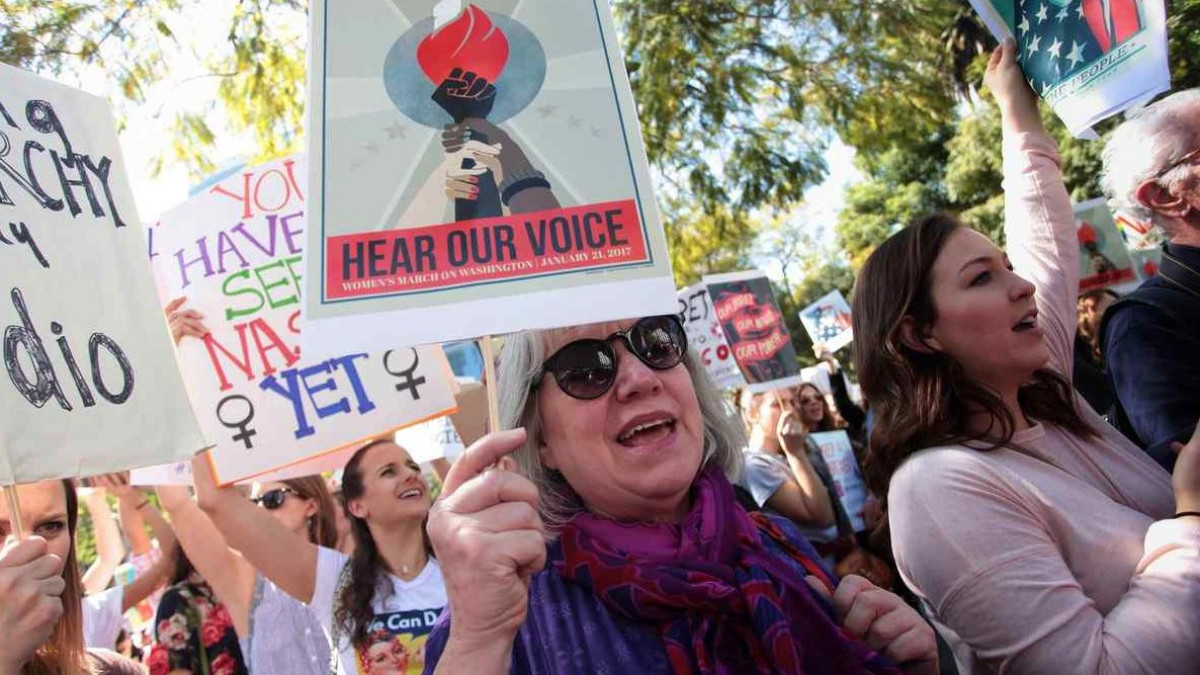
The marches of women were seen in Mexico as well as Canada and several countries Author: EFE Published: 01/20/2018 | 10:52 pm
WASHINGTON, January 20 – Although there were still no official figures, press offices estimated in hundreds of thousands the number of women who took to the streets this Saturday in more than 200 cities in the United States to express their rejection of the policies of Donald Trump on the first anniversary of his arrival to the presidency. Only in Los Angeles there was there talk of 400,000 protesters.
As reported by AFP, the second Women’s March came back to the streets with the pink caps and was also held in cities like New York, where a colorful crowd invaded an avenue that surrounds the western sector of Central Park to the Trump International Hotel, one of the facilities of the President’s real estate empire, starting early in the morning.
«Where to start? There are too many things that are wrong and I can not choose,” said LeighAnn Ferrara, a 35-year-old mother questioned about what had led her to come from the north of that state with two neighbors to demonstrate.
The peaceful protest activities will last until this Sunday when they will remember the day after Trump’s inauguration. Then, PL recalls, more than three million people from all over the country joined the Women’s Marty to express their opposition to the Republican leader.
In San Francisco, Portland, Miami, Chicago, Los Angeles, Denver and Philadelphia women also raised their voices in solidarity with victims of sexual harassment and the #MeToo (Yo también) movement, which emerged a decade ago in support of black women victims of sexual violence, but green with other characteristics in recent months.
The accusations, said PL, have reached Trump himself. Since his time as a presidential candidate he has been accused by more than a dozen women of sexual misconduct.
The demonstrations coincided with the closure of offices and dependencies of the Government after Republicans and Democrats in Congress maintained inability to reach a consensus on the federal budget.
The feared closure came into effect shortly after midnight this Saturday, when the Senate vetoed a budget measure approved by the House of Representatives.
So far, neither of the two main political parties seems to give ground in their demands, although both sides face risks for a prolonged closure, said the website The Hill, specializing in issues of the Capitol.
The White House maintains that it will not negotiate on the issue that caused the stalemate: how to replace the Deferred Action for Childhood Arrivals (DACA) program and the 800,000 undocumented youth brought by their parents to the United States during the childhood.
The leader of the Democratic minority in the upper house, Charles Schumer, convened a meeting at the White House this Saturday with the main leaders of Congress and President Donald Trump, in order to discuss a broad agreement on immigration, spending limits and disaster prevention.
For its part, the leader of the Republican majority, Mitch McConnell, tried to maintain an agreement close to the bill approved in the House – rejected by the majority of Democratic senators – whose goal is achieving at least one financing agreement provisional for three weeks.
Polls show that the majority of voters support a solution that allows immigrant youth to remain in the United States, although most also believe that this should not be a reason to force the closure of the government, PL reported.
The old problem with the “intimas”

The old problem with the “intimas”
One package of sanitary pads is not enough to supply the basic hygienic need for women of childbearing age. Product quality is also an issue.
 By Iviani Padín Geroy
By Iviani Padín Geroy
A CubaNews translation.
Edited by Walter Lippmann.

He says,”M’am, we need a couple of bricks to finish the wall.” She says: I don’t have any. But hold on a minute here, I have a couple of used menstrual pads you could have.”
All Cuban women of childbearing age are entitled to one package of sanitary pads per month 1.20 pesos in national currency. It may be that our country is the only one in the world that gives women the possibility of obtaining this product in pharmacies in a regulated manner, and for this the State spends considerable sums of money.
However, to say that the “intimate”, as it is popularly known, is a consumable subsidized by the State, that only partially solves a basic hygienic need which believes in neither productive delays nor obsolete machinery.
That is why JR returns to one of the issues that the national press has insistently addressed in recent years, and in which again and again the same complaints are repeated by the population involved.
Ten are not enough
“Now they are giving me the pads from September, according to the pharmacists, because they have reached the eighth cycle and these will be the last ones to be given this year,” says Odalis González, 25 years old.
Odalis, like many other Cuban women, has seen the need to buy sanitary pads on the black market, or “under the table”, as Marta Valdés, 34, says, claiming that the resellers always have the item and decide its price according to demand. “Ten pesos in normal times, and in times of shortage at 15 to 20 pesos in national currency,” she says.
Even with this alteration, the Mariposa pads continue to be the first option for those who cannot afford them in hard currency stores, where their price starts at 1.00 CUC.
“At home it’s me and my two daughters, and the three of us have a lot of menstrual flow, so we need three to four packages per month in addition to those assigned to us. We buy them near the pharmacy from a man who always sells them for ten pesos, because my salary is not enough to pay for them in hard currency,” says Yuniet Medina, from Centro Habana.
Danay Zaldívar, from Cerro, also prefers to buy them in this “cheaper” way, and she always have some in stock, she points out, because whoever sells them to her has them “even if the factory stops [producing them for] three months”.
The Mariposa pads are surcharged not only in the streets, but also in pharmacies, says Dayana Montejo, 22 years. “When you go many times they tell you that they don’t have them, that the factory has stopped, that there is no way to transport them, but if you ask them to ‘solve your problem’, a package appears at once, of course, at 10 or 15 pesos.”
María Luisa Ortega, from the same municipality, does not [always] get the ten pads that the package should contain, let alone that it is too small a number. “Sometimes they contain eight or nine pads, I have also found some with 11; but I do not think that this is a big problem, because in neither case are they enough, not even for women who, like me, have a regular three-day-long flow,” she remarks.
The said picture is also complicated from the popular viewpoint. Beyond nuances and stories, the black market should not be the solution to acquire this highly sought-after product.
What does science say?
The perspective of the specialists regarding menarche [fertility cycle?] and the frequency with which the pads have to be changed, justifies Cuban women’s concern when they reach a stage that by itself is complicated enough.
So says Dr. Arelis León Rodríguez, a specialist with the Amércia Arias Teaching Gyneco-Obstetric Hospital who recommends a change every four hours, that is, six pads per day during an ordinary period.
«When blood comes into contact with oxygen it begins to give off a bad smell. Also, if you use a pad for longer than you should, you would be at risk of catching germs and bacteria, since blood is also an excellent culture medium,” she explains.
Menarche can start from ten years of age and it tends to disappear before 55. That is why this is the stage in which the regulated pads are distributed; however, it is a biological process that manifests itself in different ways in each person, so the flows are not equally regular or abundant.
Then, doing some calculations reveals that 18 units are needed for a three-day-long period, and 42 for a week-long one. Definitely, the fertile stage becomes a real tragedy for women, who are forced to break the sanitary rules suggested by the specialists to make our stock of pads last a few more days.
And the quality?
«Terrible. I have to buy them in hard currency stores for my 15-year-old daughter because the ones they sell in the pharmacy make her skin sore and absorb very little, so she often gets stained. It is a sacrifice to buy them at 1.00 CUC or more because my salary is 350 pesos in national currency, and that is to cover all household expenses,” says Maribel Fuentes, from Old Havana.
The lack or excess of glue in the body of the pad is another recurring complaint. “When they have it, the glue is not where it should be, and that makes the pad very uncomfortable to wear because it runs constantly and that can be an embarrassment in front of other people,” warns Yenisey Yera, from Bauta.
Since 2007, extra-thin PADS cushions with and without wings [see translator’s note at bottom] have been marketed, but the change has not been welcomed by all women. Amarilis Verdecia, from San Miguel del Padrón, feel that, although sometimes it has been explained that these pads have greater absorption than the previous ones, it is not like that, and that to be safe, she must use more than one at the same time.
Yadira Ariosa, from Cerro, agrees with the poor quality of the product in general, but believes that the extra-thin pads are more comfortable than the thicker ones.
Butterfly according to Mathisa
On December 15, 2017 Emma Hernández Ibarra, general director of Mathisa, the National Hygienic-Sanitary Materials Company –and the only producer of sanitary pads in the country– replied through Granma newspaper to a complaint issued by Yudania Roche Sánchez, who decried their poor quality.
In the publication, director Hernández Ibarra explains that Mathisa relies in technology from the year 2004 that allows producing pads with and without wings, the latter mainly destined to hard currency stores.
She also said that the decision to produce “wingless pads for pharmacies responds to technological difficulties in the production lines”.
In search of more answers, JR spoke with Emma Hernández Ibarra and other Mathisa executives. As explained in the aforementioned publication, the super fine Mariposa pad is intended to offer greater comfort, since it is thinner and has a more compact super absorbent core in charge of gelatinizing the menstrual fluid.
She also clarifies that these pads are designed for a normal flow and a time of use of around three hours.
“Production depends on our current capacity, that is, a rate of 300 units per minute with a manual packaging system, which allows us to produce 3.6 to 3.8 million packages per month and no more” , she says.
These figures match the Cuban fertile population, so it is only possible to guarantee one package for each woman.
According to Hernández Ibarra, in 2017 the production of pads in the three factories of the country -one in the capital, which supplies the western region; one in Sancti Spíritus, in charge of the central provinces, and another in Bayamo, to supply eastern Cuba- was affected by the lack of essential raw materials.
“Eight of the ten raw materials needed to make them are imported from countries such as Spain, Italy and China, and only the packing and packaging material is found in the domestic market,” she says.
Due to the deficit of imported products, Mathisa, in turn, fail to meet its 2017 annual plan by ten percent and, although it managed to reduce the problems of distributing the entire product in stock, it will be impossible for the company to recover the production of the months in which the factories were stopped. “We do not have the capacity to produce what is necessary on a monthly basis and to make up for the delay on top of that.”
In response to this limitation, the National Hygienic-Sanitary Materials Company will begin a new “cycle” in 2018, which means that the women censored as of this month will get the pads for this year, but not those that remained pending in 2017, explained the Director General of Mathisa.
Yaimara Díaz Placeres, director of the UEB Almohadillas Mariposa Habana, explained that, in addition to the long-used machinery, the fluctuation of personnel also interferes with the quality of the process, since the quality control and package inspection activities are done manually, therefore, due to human errors, generally of personnel with little experience, defective packages are marketed.
In addition to Mariposa, Mathisa deputy director Mireyda Feris Tamayo explained, the company produces a discreet amount of the Petalos brand; the rest of the pads sold in Cuba are imported.
The concerns that women raise regarding the sanitary pads seem to accumulate, and for them there are still no definitive solutions, at least in the coming months, during which it only remains to expect that there will be no problems in the production or transportation of the Mariposa packages, and therefore, that at least we will get the 120 units that we are supposed to receive every year.
===================
Also posted to Cubadebate:
http://www.cubadebate.cu/especiales/2018/01/17/mariposa-con-retraso/#boletin20180117
===================
TRANSLATOR’S NOTE: Wings are adhesive and are supposed to stick to the underwear so the pad stays put.

Lena Headley also one of Weinstein’s Victims

‘Game of Thrones’ star Lena Headey also among Harvey Weinstein’s victims
The actress adds her voice to those of more than 60 famous actresses who have accused the Hollywood producer of harassment and/or rape.
By Juventud Rebelde
digital@juventudrebelde.cu
Published November 13, 2017 11:19:49 AM
A CubaNews translation. Edited by Walter Lippmann.

British actress known for her role as Queen Gorgo in 300 and Cersei Lannister in Game of Thrones. Author: Internet Published: 11/13/2017 | 10:47 am
LOS ANGELES, November 13. —Lena Headey, who plays the part of Cersei Lannister in the acclaimed TV show Game of Thrones, has come forward with claims of sexual harassment against the well-known Hollywood producer Harvey Weinstein, thus joining a growing list of similar accusations, according to Telesur.

Israeli-American filmmaker Harvey Weinstein was exposed to public opinion by The New Yorker and The New York Times. (Photo: Getty Images)
Through the Madrid, Spain-based Heroes Comic Con, the actress revealed that she also was harassed by the Weinstein Company and acknowledged that the ongoing wave of allegations made by a large number of female performers in Hollywood should have taken place earlier.
Headey posted on Twitter that, during the Venice Film Festival, the producer asked her to take a walk with him, and at one point Weinstein made some suggestive comment. She just laughed it off, but has never been in any Miramax film since.
Two years later, in Los Angeles, after a breakfast meeting with the producer, he asked Headey to go up to his hotel room with him to give her a script. Despite the fact that she made everything quite clear to him, he marched her to his room with his hand on her back.
When Weinstein’s key card to his room did not work, Headey says, he grabbed her arm tightly and walked her to the hotel exit, called her a taxi, and whispered: “Don’t tell anybody about this. Not your manager, not your agent”.
Israeli-American filmmaker Harvey Weinstein was exposed before public opinion following the publication of reports in The New Yorker and The New York Times that the producer is facing 64 charges of rape and/or sexual harassment. What started with the accusations of eight brave women performers mobilized others in Hollywood and elsewhere who lived through the same experience at some point in their careers but chose to remain silent out of shame or fear. It seems that the Weinstein case will keep tongues wagging, inasmuch as it has become a banner under which women are airing an issue which, more often than not, is kept under wraps and usually marked by doubts as to the validity of the allegations and lack of sufficient legal support.
Meet some of the superstars who have accused Harvey Weinstein of sexual harassment

Most of the time, Weinstein’s alleged targets were young showbiz hopefuls. He is said to have abused them with the help of his colleagues and his powerful credentials. (Photo: Getty Images)
Minka Kelly
The actress recalls a meeting with Weinstein in which the producer “regaled me with offers of a lavish life filled with trips around the world on private planes if I would be his girlfriend”, she wrote on Instagram. Kelly says she declined.
Melissa Sagemiller
In the summer of 2000, while she was filming the Miramax-distributed Get Over It, Sagemiller says Weinstein invited her into his hotel room, where he asked for a massage and refused to let her leave the room until she kissed him.
Sophie Dix
British actress Dix was 22 when Weinstein invited her to his room at the Savoy Hotel, ostensibly to watch footage from a film in which she was appearing. “As soon as I was in there, I realized it was a terrible mistake”.
Florence Darel
The French actress told Le Parisien that Weinstein allegedly pursued her after his company bought the 1993 film Fausto, in which Darel starred. In 1995, she says, Weinstein asked her to meet him at a suite in The Ritz, where he allegedly propositioned her—even though his wife at the time was in the next room.
He offered to have me be his mistress a few days a year. That way we could continue to work together. Basically, it was ‘If you want to continue in America, you have to go through me.’”
“What could I do? Could I go to the police and say, ‘This disgusting man made me an indecent proposal in his hotel room at The Ritz?’ ” Darel told People. “They would have laughed at me. Even when you are raped it is difficult to prove, and society, in many cases, puts the burden of proof on women.”
Claire Forlani
Forlani, star of the Miramax movie Boys and Girls, alleges that she “escaped” Weinstein’s advances five times.
When Beckinsale was 17, she alleges, she was invited to meet with Weinstein at the Savoy Hotel. Though she assumed the meeting would be in a conference room, she says she was sent to the producer’s room instead. “He opened the door in his bathrobe,” she wrote in an Instagram post.
Cara Delevingne
After meeting with Weinstein and a director in a hotel lobby to discuss a movie role, “Harvey asked me to stay and chat with him,” Delevingne wrote in a statement shared on Twitter. “As soon as we were alone he began to brag about all the actresses he had slept with and how he had made their careers and spoke about other inappropriate things of a sexual nature.
Léa Seydoux:
“He invited me to come to his hotel room for a drink. We went up together. It was hard to say no because he’s so powerful. All the girls are scared of him. Soon, his assistant left and it was just the two of us. That’s the moment where he started losing control,” the French actress wrote in The Guardian. “We were talking on the sofa,” Seydoux alleges, “when he suddenly jumped on me and tried to kiss me. I had to defend myself. He’s big and fat, so I had to be forceful to resist him. I left his room, thoroughly disgusted. I wasn’t afraid of him, though. Because I knew what kind of man he was all along.” He then invited me to his room. I quickly declined and asked his assistant if my car was outside. She said it wasn’t and wouldn’t be for a bit and I should go to his room. At that moment I felt very powerless and scared but didn’t want to act that way hoping that I was wrong about the situation. When I arrived I was relieved to find another woman in his room and thought immediately I was safe. He asked us to kiss and she began some sort of advances on his direction. I swiftly got up . . . I said again that I had to leave. He walked me to the door and stood in front of it and tried to kiss me on the lips. I stopped him and managed to get out of the room.”
Gwyneth Paltrow
After casting the actress in Emma, Weinstein allegedly asked Paltrow to meet with him in a suite at the Peninsula Beverly Hills, where she says he put his hands on her and suggested “they head to the bedroom for massages,” according to The New York Times. “I was a kid, I was signed up, I was petrified,” says Paltrow.
Angelina Jolie
“I had a bad experience with Harvey Weinstein in my youth, and as a result, chose never to work with him again and warn others when they did,” Jolie told The New York Times. “This behavior towards women in any field, any country is unacceptable.”
Heather Graham
“In the early 2000s Harvey Weinstein called me into his office,” Graham wrote in Variety. “There was a pile of scripts sitting on his desk. ‘I want to put you in one of my movies,’ he said and offered to let me choose which one I liked best. Later in the conversation, he mentioned that he had an agreement with his wife. He could sleep with whomever he wanted when he was out of town. I walked out of the meeting feeling uneasy. There was no explicit mention that to star in one of those films I had to sleep with him, but the subtext was there.
Judith Godrèche
French actress Godrèche says that following a meeting at the Cannes Film Festival, Weinstein invited her to his suite at the Hotel du Cap-Eden-Roc, where he allegedly asked to give her a massage. “The next thing I know, he’s pressing against me and pulling off my sweater,” she told the Times. Godrèche then left the suite.
Dawn Dunning
Costume designer Dunning says that Weinstein offered her a screen test before inviting her to a meal; upon arriving at the restaurant, she says, Dunning “was told that Mr. Weinstein’s earlier meeting was running late, so she should head up to his suite,” according to the Times. There, Dunning found a bathrobe-clad Weinstein, who allegedly offered her contracts for three films on the condition that she have three-way sex with him. “You’ll never make it in this business,” she says he replied when she laughed in response. “This is how the business works.”
Mira Sorvino
The actress, who starred in a string of Miramax movies in the 90s, told The New Yorker that in 1995, Weinstein was alone with her in a hotel room, and proceeded to massage her shoulders, which made her “very uncomfortable.” She alleges that he then chased her around the room. A few weeks later, says Sorvino, Weinstein abruptly showed up at her apartment in New York after midnight. Sorvino says she told him her boyfriend was en route—a lie that persuaded Weinstein to leave. She believes that night negatively impacted her career: ”I definitely felt iced out and that my rejection of Harvey had something to do with it.”
Liza Campbell
Campbell, a writer and artist, wrote in The Times of London that in 1995, Weinstein called her out of the blue and invited her to meet with him about potential work in his hotel room. There, she alleges, he asked her to “jump in the bath” with him.
With information from Vanity Fair
No to Gender Violence

No to Gender Violence
The violence that is externalized in public spaces against women, girls or other men according to their gender identity or sexual orientation, is barely ten percent of what occurs in an imperceptible way
 By Mileyda Menéndez Dávila
By Mileyda Menéndez Dávila
sentido@juventudrebelde.cu

NO to gender violence Author: Juventud Rebelde Published: 01/12/2017 | 09:30 pm
A CubaNews translation.
Edited by Walter Lippmann.
To banish gender violence from our lives, we must begin by accepting its multiple guises and propose worthy alternatives to everyday behaviors that normalize that scourge from male and female roles.
The violence that is externalized in public spaces against women, girls or other men according to their gender identity or sexual orientation, is barely ten percent of what occurs in an imperceptible way. It leaves no physical traces because it is exercised at the symbolic and psychological level, and is not denounced because it generates feelings of shame or disability. This is especially if the violent act comes from people who should guarantee us affection and protection.
Also influences the social tendency to tolerate other manifestations of violence reaffirmed through popular music and sporting events, the relaxation of the rules of coexistence or the misrepresentation of creeds that assume male supremacy as natural and necessary.
More than obeying
To modify this practice, it is necessary to understand the impact of intimidation on individual health and the well-being of society. Dozens of institutions investigate its causes and paths in Cuba, including the Institute of Legal Medicine, the Attorney General’s Office, the National Center for Sex Education (Cenesex), the chairs of women, the Center for Women’s Studies and the Family, the Cuban Women’s Federation (FMC), the Center for Youth Studies and the Center for Psychological and Sociological Research.
The work of the Oscar Arnulfo Romero Reflection and Solidarity Group is an example of how Cuban civil society is also involved in the transformation of these lessons. Since 2007, that body has generated messages of public good that invite reflection on psychological violence, involving students and professionals of design, social communication, journalism and audiovisual media in the creative process.
This is how the Eres Más campaign was born, which, in addition to using traditional media circuits, occupies visible spaces in billboards and other media to reach all the municipalities in the country and make stereotypes problemmatic or to dismantle myths and macho customs.
Its main goal is to urge adult women of any race and origin to become aware of their rights and adapt the response to that aggression (subtle or obvious) that seeks to perpetuate the economic and sexual dominance of the masculine.
It also invites men to gradual change in beliefs and habits, in order to establish more equitable relationships from a spirituality committed to solidarity, plurality and participation.
More than resist
One campaign does not change the reality, but it makes the evil visible and appeals to feelings and principles to overcome the resistance to change of those who live with the abuse, although as they praise equal rights, sowing in the new generations those double standards, loaded with discriminatory prejudices .
Some patterns survive in our identity to such an extent that many people justify male violence unconsciously. Society is silent when the man controls or limits the woman, but is scandalized if it is she who tries to “put on pants” because that subverts the supposed natural order, and the same happens with the distribution of passive and active roles in homosexual couples .
Neither of the two extremes is right: It is necessary to educate ourselves in amorous dialogue to break such habitual mechanisms. It may also be necessary to seek legal or therapeutic help in the orientation centers for the woman and the family, the National Revolutionary Police, the Primary Health and the offices of attention to the citizen rights of the municipal Prosecutor’s Office.
The invitation to change is made: As a man, you can make the decision to try a different behavior, more respectful and consistent with your feelings. As a woman you have the challenge of suspending the legitimacy of violence, not allowing it in your environment or transmitting it uncritically to your children.
Do not accept being imposed on the road: build your reality according to your dreams and potentialities knowing that you are more, much more than what they make you see. You are not responsible for the suffocating behavior of significant men in your life (couple, father, brothers, colleagues, religious leaders, formal authorities), even if they try to justify centuries of patriarchal domination.
________________________________
Day dedicated to youth
The main activities will take place in Las Tunas province from December 7 to 9. There will be held the National Meeting of the Platform of Cuban Men for Nonviolence and Gender Equity
Gatherings
 Author: Iviani Padín Geroy
Author: Iviani Padín Geroy
Published Friday 01 December 2017 | 09:44:47 PM
The capital city of Tuesday 12 in the Mathematics Department of the University of Havana and will be dedicated to people with special needs, and their ability to love and enjoy the erotic without limitations
ASK UPFRONT
 Author: Mariela Rodríguez Méndez
Author: Mariela Rodríguez Méndez
digital@juventudrebelde.cu
Masters in Clinical Psychology, counselor in STDs and HIV/AIDS and psychoanalyst
I do not know if I’m gay or bisexual
Posted: Friday 01 December 2017 | 09:46:58 PM
The confusion begins when I spend time without having sex with girls and I begin to get attention from men
JB: I’ve spent my whole life studying. That’s not why I stopped going out, having sex with girls and feeling good about them. The confusion begins when I spend time without having relationships with girls and I begin to draw attention to men … The problem is that I do not know if I’m gay or bisexual. I do not know in what direction my sexual orientation is. I am a 26 year old young man.
It’s better not to impose an answer that you still do not have. You must wait for experiences that allow you to distinguish your preference. You would have to define if you are only with men when you lack famale options or if you wish,in the first place, to be intimate with them, with women or both.
Sexual orientation is defined by preference; not by practices or conveniences. A person, due to multiple circumstances, can have sexual practices with people whom they do not prefer.
Homosexuality refers to the preference for people of the same sex, heterosexuality refers to the preference for people of the other sex and bisexuality supposes that they like with the same intensity people of both sexes, without being able to do without one or the other.
From what he says, until now he is doing well to be surprised by his experience. It is striking that he is not interested in being part of a couple and now he is worrying about an answer that would tie down his future decisions. Why define your orientation now? What good would it do to have that answer now? What else is going on?
| M | T | W | T | F | S | S |
|---|---|---|---|---|---|---|
| 1 | 2 | 3 | 4 | 5 | 6 | |
| 7 | 8 | 9 | 10 | 11 | 12 | 13 |
| 14 | 15 | 16 | 17 | 18 | 19 | 20 |
| 21 | 22 | 23 | 24 | 25 | 26 | 27 |
| 28 | 29 | 30 | ||||

